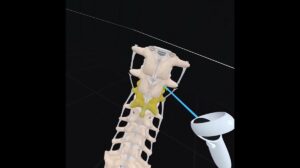Scalp cooling using a cap device worn during chemotherapy for early-stage breast cancer can reduce chemotherapy-induced alopecia by at least 50%, according to 2 separate studies published in JAMA Oncology. Scalp cooling induces vasoconstriction, which reduces both blood flow to the scalp and the amount of chemotherapy delivered to hair follicles, thus reducing hair loss. Scalp cooling is usually carried out for 30 minutes before, during, and for 90-120 minutes after each chemotherapy infusion. Scalp-cooling devices have been used in Europe for decades, but concerns about metastases have slowed their acceptance in the United States.
The Scalp Cooling Alopecia Prevention (SCALP) trial used the Orbis Paxman Hair Loss Prevention System, which is awaiting approval in the United States. Julie Nangia, MD, Baylor College of Medicine, Houston, Texas, and colleagues conducted the randomized trial, which enrolled 182 women with breast cancer receiving adjuvant anthracycline- or taxane-based chemotherapy. At the end of 4 cycles of chemotherapy, the planned interim analysis showed that 50.5% of patients who received scalp cooling retained their hair, compared with 0% of patients in the control group.
The second study used the DigniCap device, which was cleared in the U.S. in 2015. Hope S. Rugo, MD, University of California, San Francisco, and colleagues conducted the prospective cohort study in which 106 women with breast cancer used the cap device and 16 women served as controls. After completing non-anthracycline-based chemotherapy, hair loss of 50% or less was seen in 66.3% of patients who used the scalp cooling device, compared with 0% of patients in the control group.
In an accompanying editorial, Dawn L. Hershman, MD, MS, Columbia University Medical Center, New York, NY, points out that approximately half of women think that hair loss is the most traumatic facet of chemotherapy, and 8% have said they would forego chemotherapy rather than lose their hair. Perhaps scalp-cooling devices can encourage women to opt for life-saving treatment, improving outcomes and quality of life in the process.




